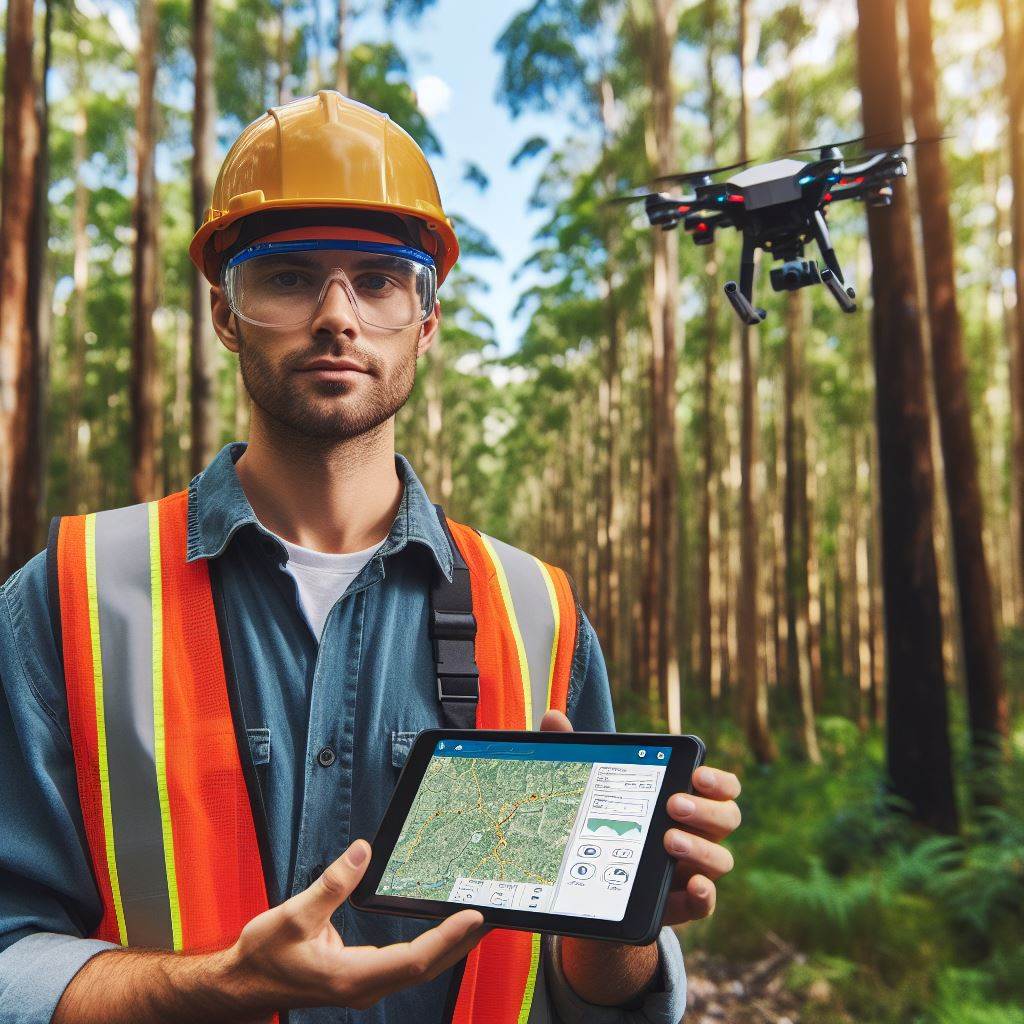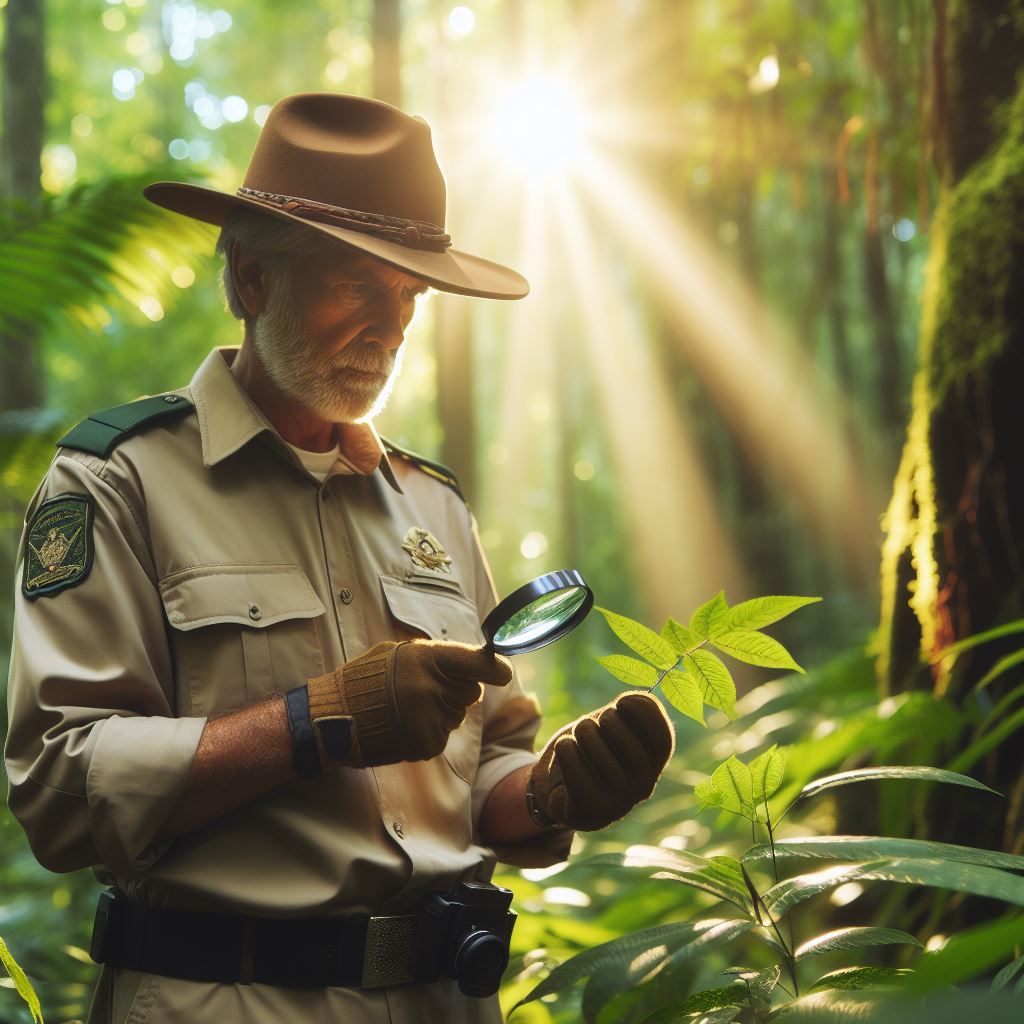Introduction
Forestry technology plays a crucial role in managing Australian woods, ensuring sustainable practices are followed.
With its vast forest cover, Australia’s forestry industry is a key economic and environmental asset.
From plantation management to timber harvesting, technology is transforming the sector.
The use of drones, advanced mapping tools, and remote sensing techniques enables accurate forest inventory and monitoring.
Forestry tech also helps in disease and pest management, ensuring the health of the forests.
Additionally, it aids in optimizing resource allocation, minimizing waste, and enhancing productivity.
With climate change posing significant challenges, technology offers solutions for better climate resilience and adaptive forest management.
Furthermore, digital platforms and data analytics assist in efficient decision-making, allowing stakeholders to make informed choices.
The incorporation of smart technology and automation improves safety and reduces labor-intensive tasks.
Effective monitoring systems aid in preventing illegal logging, ensuring compliance with regulations.
Through advancements in genetic technology, researchers develop improved tree breeds that are resistant to diseases and adapt to changing climatic conditions.
Overall, the importance of forestry technology in Australia cannot be overstated, as it enables sustainable forest management, conservation, and economic growth.
Overview of Forestry Tech
Definition and scope of forestry technology
Forestry technology involves the application of scientific knowledge, tools, and techniques in managing forests for various purposes.
It encompasses the use of advanced equipment, data analysis, and innovative practices to enhance forest management.
The scope of forestry technology includes forest inventory, planning, monitoring, harvesting techniques, and post-harvest activities.
It also involves the use of technology for fire prevention, pest control, reforestation, and sustainable forest management.
Importance of technology in enhancing efficiency and sustainability in forestry
Technology plays a crucial role in improving efficiency and sustainability in forestry practices.
With the use of advanced tools, foresters can accurately assess forest resources, including timber volume and species composition.
This information helps in planning and implementing sustainable harvests that maintain the long-term health of the forest ecosystem.
Technology enables precise forest inventories, allowing for effective decision-making regarding forest management strategies.
Furthermore, technology aids in optimizing harvesting techniques, reducing waste, and enhancing productivity.
Through the use of mechanized equipment, such as harvesters and forwarders, trees can be efficiently felled, processed, and transported.
This not only saves time and labor but also minimizes damage to the surrounding environment during logging operations.
Technology also contributes to the development of innovative practices, such as selective tree breeding and genetic modification.
These advancements aim to improve the quality and growth rate of tree species, enhancing productivity and sustainability.
Moreover, technology enables the implementation of precise silvicultural techniques, such as site-specific fertilization and irrigation.
Your Personalized Career Strategy
Unlock your potential with tailored career consulting. Get clear, actionable steps designed for your success. Start now!
Get StartedThese practices help establish healthy and resilient forests, capable of withstanding environmental stresses and climate change.
Furthermore, technology plays a vital role in monitoring forest health, detecting and managing pest outbreaks, and preventing wildfires.
Remote sensing, drones, and satellites provide real-time data on forest conditions, facilitating early intervention and forest protection.
In review, forestry technology encompasses a wide range of tools and techniques used to manage forests efficiently and sustainably.
It helps in accurately assessing forest resources, optimizing harvesting techniques, and implementing innovative practices.
Moreover, technology aids in enhancing productivity, reducing environmental impacts, and ensuring the long-term health of forests.
Overall, the adoption and advancement of technology are key in achieving sustainable forest management in Australia and worldwide.
Read: Youth in Farming: Australia’s New Generation
Current Trends in Australian Woods
Use of Drones for Aerial Surveys and Monitoring
Drones have revolutionized forestry management in Australia, offering numerous benefits. These unmanned aerial vehicles provide valuable data and insights into forest ecosystems.
They are employed for various purposes, such as mapping, inventory monitoring, and assessing forest health.
Drones facilitate quick and accurate data collection, replacing traditional methods that are time-consuming and labor-intensive. They can cover large areas more efficiently, capturing high-resolution images and videos through aerial surveys.
This enables foresters to observe vegetation patterns, detect changes in tree density, and identify potential hazards.
In Australian forests, drones are extensively used for fire management. Equipped with thermal cameras, drones can quickly detect hotspots and help firefighters strategize their response.
Additionally, drones aid in pest and disease control by identifying affected areas, allowing targeted interventions to mitigate damage.
Implementation of Remote Sensing Technologies
Remote sensing technologies play a crucial role in modern forestry practices. They involve capturing data from a distance using various sensors and instruments, enabling comprehensive analysis of forest ecosystems.
In Australian woods, remote sensing tools like LiDAR, hyperspectral imagery, and thermal cameras are commonly employed.
LiDAR, which stands for Light Detection and Ranging, uses laser pulses to measure distances and map terrain. It accurately captures three-dimensional data, helping foresters understand forest structure and calculate timber volumes.
Hyperspectral imagery detects electromagnetic radiation across different wavelengths, providing detailed information about vegetation health, species composition, and stress levels.
Thermal cameras, on the other hand, detect temperature variations, aiding in fire detection and monitoring. They can identify hotspots and help prioritize firefighting efforts.
Remote sensing technologies enable foresters to collect vast amounts of data quickly, improving decision-making and resource planning.
Stand Out with a Resume That Gets Results
Your career is worth more than a generic template. Let us craft a resume and cover letter that showcase your unique strengths and help you secure that dream job.
Get HiredIntegration of Geographic Information Systems (GIS)
Geographic Information Systems (GIS) play a crucial role in mapping, analyzing, and planning forest resources in Australia.
These systems integrate spatial data, such as satellite images, aerial photographs, and field surveys, with attribute data to create comprehensive forest inventories and management plans.
GIS allows foresters to identify optimal locations for timber harvesting, factor in environmental constraints, and design efficient transportation routes.
It aids in identifying areas prone to wildfire risks, helping authorities implement preventive measures. GIS also assists in monitoring protected areas, ensuring compliance with conservation regulations.
In the Australian forestry sector, GIS applications extend beyond resource management.
They are utilized for urban planning, biodiversity assessment, and carbon sequestration projects. GIS enables stakeholders to visualize, evaluate, and communicate forest-related information effectively.
Adoption of Precision Forestry Techniques
Precision forestry involves utilizing advanced technologies to optimize forest management practices. It integrates data from various sources, including drones, remote sensing, and GIS, to enhance decision-making, increase productivity, and minimize environmental impacts.
One of the key benefits of precision forestry is improved accuracy in timber extraction. By precisely identifying trees suitable for harvesting, foresters can minimize wastage and reduce ecological disturbance.
This approach also optimizes log transportation routes, minimizing fuel consumption and carbon emissions.
Precision forestry in Australian woods has led to notable improvements in biodiversity conservation. By mapping and analyzing habitat features, foresters can protect valuable ecosystems and identify areas for habitat restoration.
This aids in preserving biodiversity and ensures sustainable forest management for future generations.
In a nutshell, the forestry sector in Australia is embracing emerging technologies and trends to enhance sustainable forest management.
The use of drones, remote sensing technologies, GIS, and precision forestry techniques has revolutionized the industry, enabling efficient data collection, analysis, and decision-making.
These advancements contribute to the preservation of Australia’s diverse forest ecosystems while ensuring the responsible utilization of forest resources.
Read: Farm-to-Table Movement: An Australian Perspective
Gain More Insights: A Day in the Life: Australian Forester Q&A
You Might Also Like: Sustainable Farming in Australia
Impacts of Forestry Tech on Australian Woods
Enhanced forest inventory and data collection
- Introduction of advanced technology in forestry has revolutionized the process of forest inventory.
- With remote sensing and geospatial techniques, accurate data collection has become faster and easier.
- Detailed information on forest structure, tree species distribution, and biomass estimation is now available.
- This enhanced inventory helps in better understanding of the forest ecosystem and its management needs.
- Accurate data collection also aids in the identification of invasive species and potential risks to forest health.
- The availability of reliable data assists in making informed decisions regarding sustainable forest management.
More accurate and efficient forest management strategies
- Forestry tech has facilitated the development of highly precise forest management strategies.
- Real-time monitoring of forests allows for timely intervention in case of pests, diseases, or natural disasters.
- Advanced models and simulations based on collected data help in predicting forest growth and yield accurately.
- These predictions enable effective planning of logging activities and optimal utilization of forest resources.
- Improved accuracy in forest management strategies ensures minimal impact on biodiversity and soil quality.
- Combining technology with traditional knowledge helps strike a balance between conservation and utilization.
Improved environmental monitoring and protection
- Forestry tech has significantly improved environmental monitoring and protection in Australian woods.
- Remote sensing techniques help detect deforestation, illegal logging, and encroachments on forest areas.
- Real-time monitoring enables timely intervention to mitigate the impact of fires and other environmental risks.
- With the help of satellite images, changes in land use patterns and forest cover can be monitored effectively.
- Early detection of environmental degradation allows for prompt actions to prevent further damage.
- Enhanced protection measures ensure the preservation of biodiversity, water resources, and ecosystem integrity.
Increased safety for forestry workers
- Technological advancements have prioritized the safety of forestry workers in Australian woods.
- Drones are being utilized for aerial surveys, reducing the need for ground-based manual inspections.
- Robotic tools help in the precise cutting of trees, minimizing risks associated with manual felling.
- GPS tracking systems improve the safety of workers by notifying their location in remote forest areas.
- Advanced communication devices enable quick response in case of accidents or emergencies.
- Proper training and utilization of forestry tech ensure a safer working environment for all personnel involved.
In essence, the integration of forestry tech in Australian woods has had significant positive impacts.
Enhanced forest inventory and data collection, accurate forest management strategies, improved environmental monitoring and protection, and increased safety for workers have all contributed to sustainable forest management in Australia.
As technology continues to advance, it is essential to leverage its potential to strike a balance between economic development and environmental conservation.
Read: Indigenous Farming Techniques in Australia

Find Out More: A Day in the Life of Aussie Fishermen
Challenges and Future Outlook
Potential obstacles in the adoption of forestry technology
- Limited awareness and understanding of the benefits of forestry technology among stakeholders.
- Resistance to change and reliance on traditional forestry practices can hinder the adoption process.
- High initial investment required for implementing advanced forestry technology may pose a financial challenge.
- Lack of skilled workforce to operate and maintain the sophisticated equipment used in forestry technology.
- Concerns regarding the potential environmental impact of certain forestry technologies may lead to opposition.
- Regulatory barriers and bureaucratic processes can impede the implementation of forestry technology.
Opportunities for growth and innovation in forestry tech
- Integration of big data and artificial intelligence can revolutionize forest management practices.
- Remote sensing technology allows for efficient and accurate monitoring of forest health and resource planning.
- Development of unmanned aerial vehicles (drones) can accelerate forest surveys and data collection.
- Adoption of precision forestry techniques can optimize resource allocation and yield higher productivity.
- Application of advanced geospatial technologies can enhance forest inventory and mapping processes.
- Utilization of machine learning algorithms can predict and prevent forest fires and pest outbreaks.
Predictions for future trends and advancements in Australian woods
- Increased use of robotics and automation in forestry operations for improved efficiency and safety.
- Continued development of smart sensors and Internet of Things (IoT) devices for real-time forest monitoring.
- Integration of virtual reality (VR) and augmented reality (AR) in forestry training and simulation.
- Advancements in forest biotechnology, including genetically modified trees for enhanced resilience and productivity.
- Implementation of blockchain technology for transparent and secure tracking of wood supply chains.
- Collaboration between industry, academia, and government for research and development of sustainable forestry solutions.
In fact, while the adoption of forestry technology in Australia may face several challenges, there are also significant opportunities for growth and innovation.
With advancements in various technologies and the potential to overcome obstacles, the future of forestry in Australian woods looks promising.
By embracing new techniques and staying updated with emerging trends, the forestry sector can achieve sustainable practices and contribute to the overall well-being of the environment and economy.
Transform Your LinkedIn for Maximum Impact
Elevate your professional brand with a LinkedIn profile that attracts recruiters, showcases your expertise, and maximizes opportunities. Stand out in your industry with a profile built for success.
Boost ProfileRead: The Economics of Farming in Australia Unveiled
See Related Content: Agri Research Grants in Australia
Conclusion
Throughout this blog post, we have explored the latest trends in forestry technology in Australia.
We discussed the use of drones for forest monitoring, the implementation of GIS systems for data analysis, and the benefits of using remote sensing technology for forest inventory.
It is crucial for professionals in the forestry industry to stay updated on the latest technological advancements. By implementing new tools and techniques, they can improve efficiency, accuracy, and sustainability in their forestry practices.
Staying informed about trends ensures they remain competitive in the industry.
We encourage all forestry professionals to embrace technology and explore its potential in their careers.
By understanding and adopting new tools, they can enhance their skills, make informed decisions, and contribute to a more sustainable and resourceful forestry sector in Australia.
In closing, technology continues to revolutionize the forestry industry in Australia. It offers numerous benefits, such as improved forest management, increased productivity, and better conservation practices.
By staying informed and incorporating these advancements into their work, forestry professionals can lead the way towards a greener and more sustainable future.




